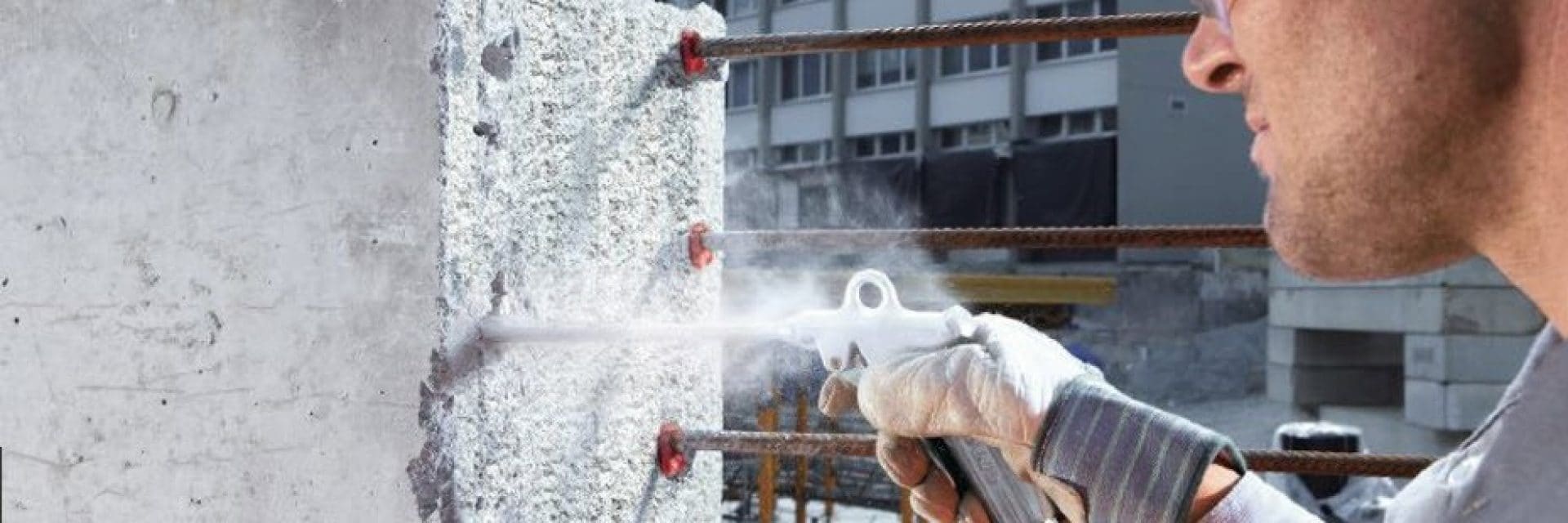- Trang Chủ
- BS 8539:2012
BS 8539:2012
Code of Practice for the selection and installation of post-installed anchors in concrete and masonry.

What is it and what is the purpose?
The recently published BS 8539 is the first British Standard that provides recommendations for the safe selection and installation of anchors for use in concrete and masonry. The intention is to provide practical guidance for designers, specifiers, manufacturers, suppliers, contractors, installers and testers of anchors. BS 8539 is also linked to the relevant European regulations, especially with respect to selecting products with the correct ETA’s for the application.
BS 8539 is restricted to the use of anchors inserted into concrete and masonry drilled holes and it is intended to facilitate all stakeholders involved in the design, selection and use of anchors to achieve the security required.
“If anchors are not selected and installed correctly, they might not have the capability to resist loads as intended. The security of the fixture and, in some cases, the structure might then be compromised, leading to failure with consequential economic loss, injury, or even death.”
Main causes of fixing failures:
• Wrong fixing being selected, or fixing not designed correctly
• Specified fixing being changed without proper care
• Poor Installation
“Users of this British Standard are advised to consider the desirability of selecting anchors with a European Technical Approval (ETA).”
Who does it affect?
The code is aimed at everyone involved in the use of the fixings:
• Designers
• Specifiers
• Contractors
• Installers
• Testers
• Manufacturers
• Suppliers
What does it mean for…Designers
The designer should take into account the preliminary design considerations and supply the necessary information to the specifier to complete the anchor selection process.
For example:
• Confirmation that the structure can sustain the characteristic action
• Environmental conditions including cracked/uncracked concrete, corrosion conditions, required durability
• Is the application safety relevant
What does it mean for…Specifiers
The specifier should determine the most appropriate anchor for the particular application, by following the selection process in Clause 5 and using the appropriate design method for that anchor. Specification of the chosen anchor should be made explicitly and completely, so that the anchor installed on site fulfills the design criteria.
Information about the selected anchor provided to the contractor/installer should include:
• Full description – make, type, ETA no. (when available), size, designation, manufacturers ref / order no. • Installation instructions
• Guidance on what to do if reinforcement is hit when drilling
What does it mean for…Contractors
The contractor should ensure that the specification is followed and the installer is capable of correctly installing the anchor.
If any party proposes an alternative anchor to that specified, the contractor should ensure that the change management procedure outlined in Clause 10 is followed.
If the contractor is aware of any changes to the assumptions made by the specifier in designing / selecting the specified anchor (for example changes in the strength of the base material) he should inform the specifier and await instructions.
What does it mean for…Installers
The installer should follow the correct installation procedures as advised by the manufacturer of the anchor. They should also ensure that the correct drilling and setting tools are available and used.
If due to site conditions (for example hitting reinforcement during drilling) the anchor cannot be installed in accordance with the manufacturer’s instructions then the installer should refer back to the specifier and/or the manufacturer of the anchor and await instructions. It may be necessary to review the design and suggest an alternative fixing / alternative method of installation.
What does it mean for…Site Testers
Site testers should carry out tests using the appropriate procedure as set out in Annex B.
Before testing, the anchors should be installed as per the manufacturer’s instructions and in the locations prescribed by the specifier or contractor. Test results should be recorded in a full and comprehensive manner and communicated to the specifier or contractor.
What does it mean for…Manufacturers and Suppliers
The anchor manufacturer / supplier should provide sufficient information to allow the specifier and installer to ensure the safe selection, specification, installation, use, maintenance, cleaning, dismantling or disposal of the anchor without risk to safety or health.
For example:
• Designation of anchor including size and type]
• Performance data including: • Characteristic resistance
• Design resistance (or partial safety factor for the material to allow calculation)
• Recommended resistance (or appropriate safety factor to allow calculation)
• Setting details including min. thickness of base material, edge and spacing criteria
• Installation instructions and equipment needed
What can Hilti do to support satisfaction of the requirements?
Hilti can offer support from design to installation, with ETA approved anchors. We can also offer peace of mind to the designer, specifier, contractor and installer.
Key points:
• Provision of full technical information aiding the selection process
• Provision of calculation software expediting the selection process
• Full installation instructions with the ability to demonstrate installation to ensure safe use of the anchors • On-site support when site conditions differ from the assumptions made at the design phase
References: BRITISH STANDARD INSTITUTION 2012. BS8539: 2012 Code of Practice for the selection and installation of post-installed anchors into concrete and masonry. London: BSI.
Where can I get further support?
Our engineers are available to provide further information on how BS8539 will affect you. Please contact us to request for further information or fix an appointment with an engineer.
Ask our engineers
